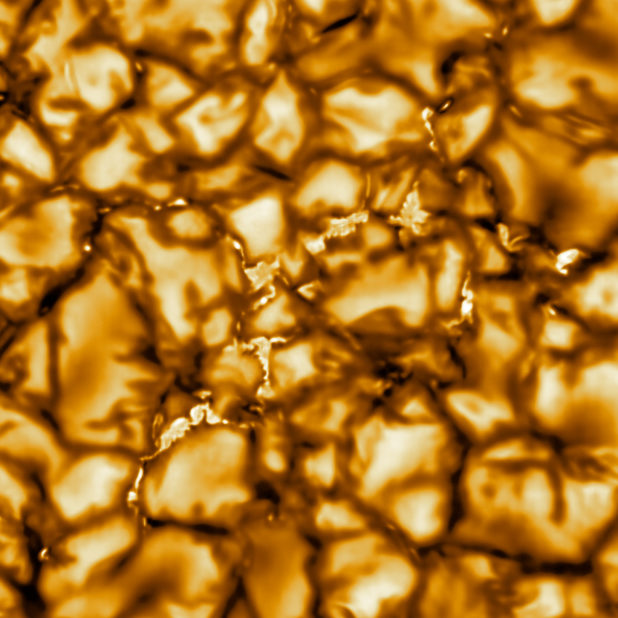New Images capture the face of the sun in unprecedented detail
What you are looking at is not the the crispy golden inside of a Cadbury’s Crunchy nut bar. It’s not some large pot of your grandmother’s spaghetti bolognese gone wrong because she put in the chicken korma sauce by accident. Rather, these are images from the National Science Foundation’s Daniel K. Inouye Solar Telescope, showing the surface of our sun up close in a way never seen before.
Since ancient times the movements and makeup of the sun have been a matter of great speculation: to philosophers, scientists and religious groups alike. Before the advent of powerful telescopes, it was thought that the bodies of the superlunary world (the cosmos) where unchanging and unchangeable in their perfection.
The very idea that the sun, being a perfect sphere could have “spots” was highly controversial, more still the idea that these spots could move. It was Galileo who argued in favour of this theory. Nevertheless, the idea that there could be “irregularities” in such a perfect celestial body was seen as revolutionary for the time. Now with modern technology we can see that indeed the whole surface of the sun is in constant flux.
What you are seeing are patterns of plasma which mar the face of the red giant. Each of these almost cell-like structures is about the size of Texas, giving you an idea of the absolute immensity of our nearest star which burns about 5 million tons of hydrogen fuel per second. The plasma twists and turns its magnetic fields in a maelstrom of energy.
This has profound effects on our planet in ways we don’t fully understand yet, but it is hoped the new telescope can measure solar activity over the coming years to give us new data on the relationship between the sun and our own weather. Massive power outages from solar events is still a concern globally.
Ideally, this will give scientists the data they need so governments can pre-empt space weather disasters in future. The window of time between potential impacts of these events has usually been about 48 minutes notice, but this will extend that time period to about forty-eight hours giving us more time to prepare for power outages, allowing infrastructure to be put in place to protect our grids.
The telescope itself has one of the largest mirrors in any solar telescope in the world, a 13 foot mirror raised up over the 10,000 foot Haleakala summit. It creates a lot of heat as you might imagine, so there are seven miles of piping which distribute coolant.
It is the product of almost twenty years work in cutting edge design, and over the next six months technicians will be prepping it for use by the scientific community.
But perhaps on a more visceral level, these images show us just how little we can be sure of about even the closest parts of the universe. Science and technology is allowing us to see things in different ways, from different angles, in this case up close to a previously unimaginable extent.
For some it may ruin the mystique. It may even be the case that some artists will have to consider going back to the drawing board. Yet in all honesty, who can say they have not looked up at that bright benign gleam in the sky and wondered what it would be like to dip a ladle in to that giant melting pot. Just don’t burn yourself in the effort!










